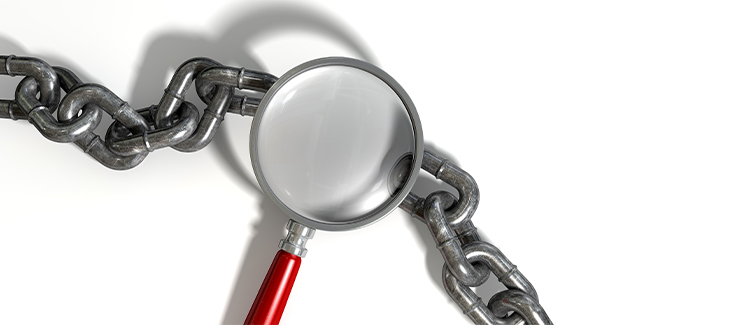According to the U.S Environmental Protection Agency’s (EPA) Guidance for Preparing Standard Operating Procedures (SOPs), an SOP, “is a set of written instructions that document a routine or repetitive activity followed by an organization.” They go on to explain that developing and using these instructions is the key to successful and high-quality care. SOPs can provide employees with the information they need to properly perform their daily tasks and can also improve consistency in the quality and integrity of what a system is meant to produce. In the case of the healthcare industry, this means higher quality care for patients.
If your facility’s SOPs are not up to par, are outdated, or you are having to create new SOPs for new processes, there are many variables to consider.
Job Complexity
As you think about developing or reviewing existing SOPs, a critical factor that is important to always remember is the complexity of the jobs your staff members are asked to complete. The more complicated the tasks, the more detailed your SOPs should be. When it comes to using and reprocessing ultrasound probes, there are a number of steps that need to be considered:
• The reprocessing procedure itself
• Inspection of cleaning, drying, and rinsing processes
• Monitoring of sterilization and high-level disinfection (HLD) processes
• Maintaining documentation for traceability purposes
• Safety with regard to using the equipment and personal hygiene
• Use of personal protective equipment (PPE) where relevant to protect skin, eyes, mucus membranes, and clothing
Training
A part of developing SOPs that can often be overlooked is determining the level of competency required for the personnel tasked with a particular job and including that as part of the standard procedure.
The Centers for Medicare and Medicaid Services (CMS) Hospital Infection Control Worksheet requires surveyors to ensure each facility has documentation of training, competence, and qualifications for staff involved in reprocessing procedures. Staff involved in reprocessing and using ultrasound equipment should receive orientation training prior to commencing their responsibilities. This should establish the knowledge base required to effectively perform reprocessing, safely use ultrasound machines, promote staff and patient safety, and mitigate infection transmission risks.
Reprocessing personnel should have documented competence in relevant cleaning methods, microbiocidal processes, and equipment understanding related to the specific sterilization and HLD processes used in the department. Furthermore, they should have knowledge of general sterilization or disinfection processes, infectious disease transmission principles, and aspects of liquid or chemical sterilization and HLD if relevant.
Personnel are also required to participate in annual and ongoing training which focuses on departmental policies, infection prevention and control, use of equipment, safety, attire, personal hygiene, and compliance with local, state, and federal regulations.
Safety
The CDC Guidelines and AAMI Standards both require that staff and patient safety not be compromised by the chosen reprocessing workflows. Be sure to keep safety in mind and never cut corners to save time or money.
One example of an area where employee safety must be considered is exposure to HLDs and their fumes. Do you manually reprocess probes? If so, how do you protect employees from possible spills and from harmful HLD fumes? If you use an automated probe reprocessing system, does it include a risk of disinfectant exposure? Does your system expose employees to HLD fumes or does it filter those out?
Cost
The AAMI Standards highlight cost-effectiveness factors that should be evaluated related to equipment (e.g., purchase, service, maintenance, consumables, PPE, energy, disposal costs and training). As the costs for a facility rise, so do costs for patients. With the prices of healthcare already critically high, we each must do our part to bring down costs for everyone.
Consider time required to examine patients versus time for reprocessing. If your reprocessing procedure is too slow to keep up with your patient flow, costs will necessarily increase. If there is high patient turnover, it may be necessary to change the reprocessing procedure to improve turnaround time. By automating your probe reprocessing procedure, you can give more time to your techs to focus on patient-centric tasks.
Reprocessing Location
If probes are reprocessed at point of use, then the disinfection method must be safe for patients and staff. The AAMI Standards and CDC Guidelines require a dirty-to-clean workflow during reprocessing. This should be observed regardless of the reprocessing location with designated dirty and clean areas to prevent cross contamination.
If the transport of dirty or clean ultrasound devices is required to a central reprocessing area, then a probe transportation protocol must be observed to prevent mixing of dirty and clean instruments. Does the transport method of dirty and clean probes prevent probe damage and is the status of the probe easily identifiable? It also must protect clean probes being transported from becoming contaminated and protect passersby from coming into contact with dirty probes.
Automated or Manual
Consideration should be given to automation versus manual processes. It is widely accepted that automated processes minimize the influence of human factors on reprocessing outcomes and should be adopted wherever possible. Employing an automated reprocessor will improve patient outcomes, cost, safety, and require less training than manual methods. If your facility is able to automate these processes, it is virtually always the best choice to do so.
Finalizing SOPs
Ultimately, developing, implementing and measuring an effective reprocessing procedure is challenging and time consuming. When establishing or making changes to existing SOPs, infection preventionists and other relevant subject matter experts should be involved. It can even be helpful to get input from those who will be tasked with reprocessing as it will help bring ownership and can shed light on inefficiencies they may see day to day. Your final SOP will have many components, but the primary focus should remain on your employees and patients. SOPs must ensure staff competency and safety which will ultimately reduce human errors and result in the best care for patients.


